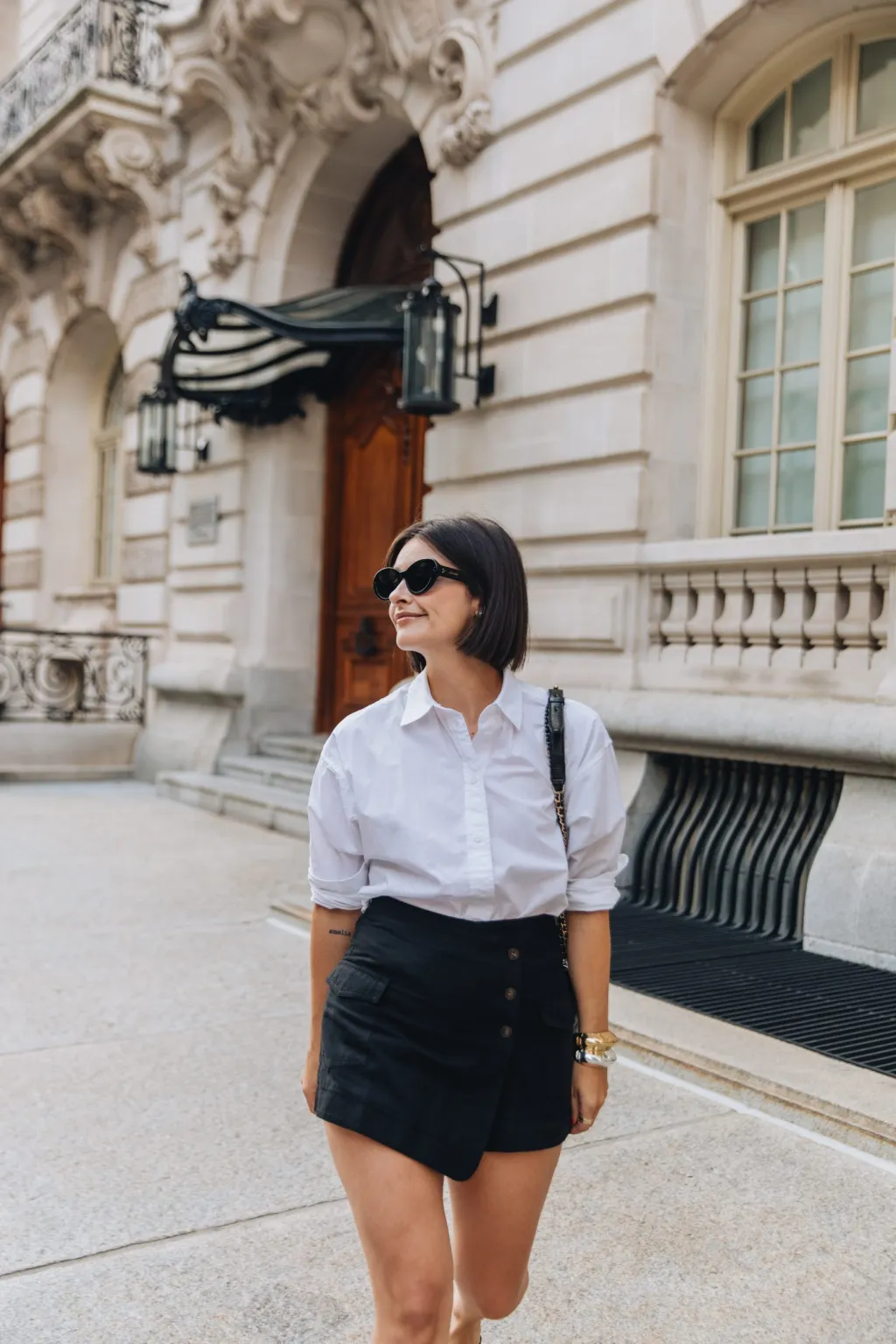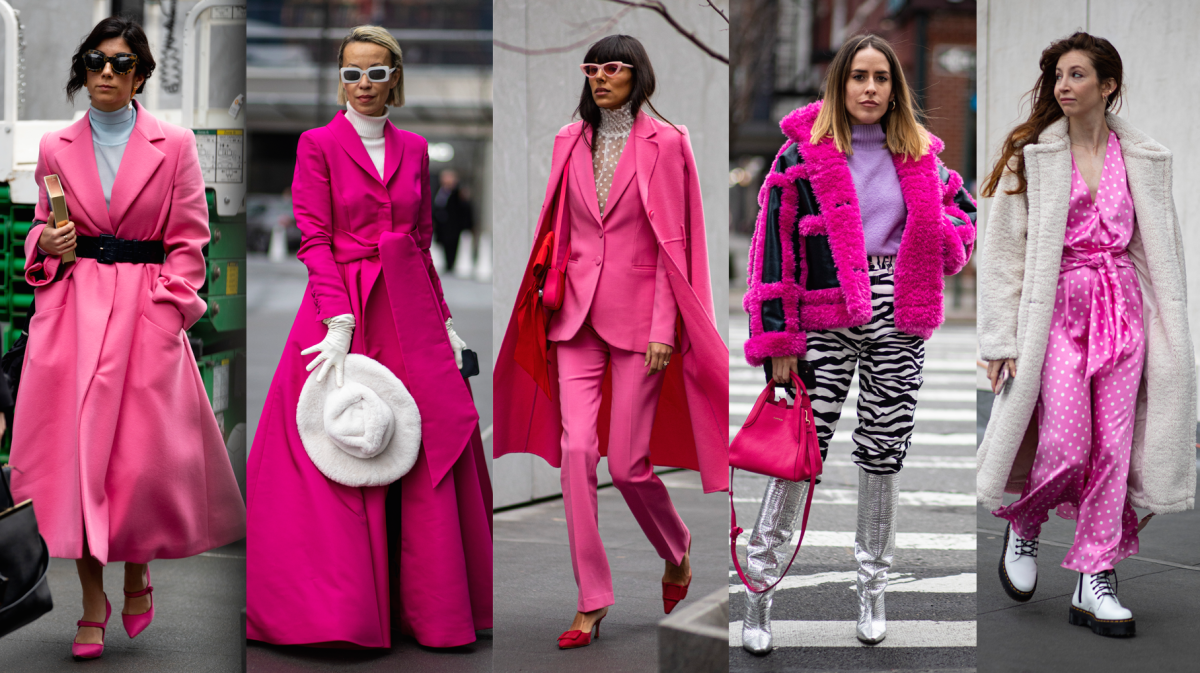… or the importance of materials: understated colors require high-quality materials. It’s up to you to find them.
Last thing: don’t get too worked up over colors. There’s very little risk of getting it really wrong. As I repeat tirelessly, focus your efforts on finding excellent cuts and materials, especially when it comes to your basics, which you can later team with pieces in bolder colors.
Never go naked again!
Read our Best-Of we take the Crash Course to start working on rock-solid foundations.
But you have to know, that our best advice is in The Kinowear Bible. Included 100+ HD photos of looks that you can easily replicate.
Which colors should I wear?
Blue, brown, gray: the three pillar colors
It’s a bit of a shame, but we have less freedom than women when it comes to the colors we can wear. Generally speaking, a guy’s wardrobe should be based on three colors: blue, brown, and gray (and any tone that’s a combination of these colors, like blue-gray, taupe, and camel).
Of course, you can add touches of other colors to your outfits, but I defy you to dress head to toe in purple and not look like a Power Rangers fan… Well, alright, it’s possible. But I want this post to be accessible to as many people as possible, so, for now, let’s focus on the basics. (N.B. If you’re the purple Power Ranger and you’re reading this post, please ignore this paragraph.
Abuse these three pillar colors, especially if you’re a style beginner. Gray is the easiest of these colors to wear, and, contrary to the stereotype, isn’t a “sad” color… Play with original cuts and materials, or use gray to balance out other pieces in bolder tones, like Bordeaux, khaki, violet, clear blue, orange, etc.
If you select all of your clothes in these three colors, you’ll never have to worry about clashes when it comes to putting together your outfit!
Tip: don’t overlook pastel shades, especially in summer. Acne, APC or Saturday Surf NYC, and more generally, Scandinavian brands, offer some nice pieces.
The colors you wear too much of
Certain colors should clearly be used in moderation. I’m thinking particularly of bold shades of primary and secondary colors like the colors of the poster paints you used in kindergarten. These shades are quite simply too garish and lacking in subtlety. You can use them in small doses, but more than one item per outfit in a tone like this is probably already too much.
The case of black and white
Let’s debunk the myth right now. Black and white are not easy colors to wear. And they don’t suit everyone. Quite the opposite, these colors are tricky to wear well, because they’re at the two extremes of the color spectrum. Often, if the other colors you wear with your black piece(s) aren’t dark enough, all people will see is the black piece(s), which will dominate the outfit. The same goes for wearing colors that aren’t light enough with your white piece(s).
What’s more, these aren’t practical colors. White becomes gray through washing and general wear, and black fades unless you buy really high-end clothes where everything is done so that the dye holds.
So use them in moderation, and if you do buy black, do so purposefully (i.e. with a specific idea in mind), not by default. For the easy option, go for gray.
Ben and Gill wrote a response to an email from one of our readers on the subject of colors, where they talked about how to wear black. It repeats some of what has been said in this post and the previous one
So stop worrying about colors and start thinking about contrast!
Now that you no longer need to stress out about wearing the right colors (because, at the end of the day, you can always just stick to blues, browns, and grays), we come to the second key element of coordinating colors: contrast. Don’t skip this part, because it’s the most important one!
If you only retain one piece of information from this post, it should be this sentence:
The level of contrast between the items you’re wearing should be the same as the level of contrast between your skin and your hair.
A hangover from our hunter-gatherer ancestors, the eye is always drawn to contrasts, to the part that sticks out from the rest. As a consequence, an observer’s eyes will always be drawn to the most contrasting part of your outfit. The objective is of course to direct attention towards your face with an outfit that has just the right dose of character.
The problem is that if you have fair skin and light hair, but you wear an outfit with strongly contrasting colors, people won’t see your face.
Conversely, if you have fair skin and dark hair, but your outfit lacks contrast, your clothes will look a bit like pajamas, as all the attention will be on your face.
Photo illustrations (I’ve put the photos in black and white so that you can see the contrasts separately from the colors themselves):
Intermediate skin/hair contrast: Justin Timberlake.
Left: little contrast in the outfit but contrast on the face = pyjama effect.
Right: the outfit contains more contrast, and the result is more balanced.








